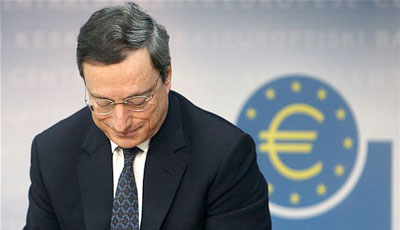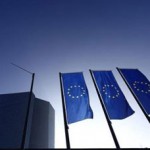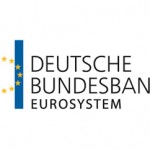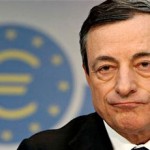ECB’s Big Bang Is Impressive, but More Is Needed

After dropping hints for several weeks, the European Central Bank made history today by doing what no major central bank has done outside a major financial crisis: It pushed the rate on bank deposits to minus 0.1 percent. The move was part of a big package in which the ECB also dropped its main lending rate to 0.15 percent and eased up on collateral rules. Moreover, ECB President Mario Draghi signaled the central bank’s willingness to do more, should conditions warrant it.
It is an impressive move, and it needed to be, given the headwinds facing the European economy. Yet it may not be sufficient.
In this innovative and diversified package, the ECB is easing monetary and credit conditions not only through the negative deposit rate and a lower lending rate, but also by putting an end to its weekly absorption of money in circulation (a process called sterilization) and providing better credit access for banks that lend to businesses and consumers. It also announced its intention to buy certain assets in the marketplace, underscoring Draghi’s comment that “we aren’t finished yet.”
Three factors probably motivated the ECB’s bold actions. First, the central bank has mounting concerns with “lowflation,” confirmed by this week’s unexpected fall in the euro-area inflation rate to 0.5 percent.
Those concerns were heightened today with the ECB’s downward revisions in its inflation forecasts for 2014 and 2015. Persistently low inflation could lead Europeans to expect more of the same over the medium term, which in turn would exacerbate debt concerns and slow economic activity.
Second, the ECB is worried that a relatively strong euro is adding to disinflationary pressures and making it harder for European exporters to compete.
Third, the ECB is concerned about the limited availability, and relatively high cost of, credit for small- and medium-term enterprises in the peripheral countries. The lack of credit is curtailing an important source of employment and economic vibrancy.
Many of the measures the ECB introduced today have been tried elsewhere as central banks push against the lower bound of interest rates. The experience is far from encouraging, something the ECB seems to have understood. So rather than adopt measures piecemeal, the ECB has opted for a “big bang.”
Moreover, to encourage people to give these measures the benefit of the doubt — after all, the ECB is in the business of informing and influencing the economic decisions of households and companies — the central bank also made it clear that it would do more to speed Europe’s recovery.
Yet the success of the ECB’s historic moves is far from guaranteed, if only because the euro area faces considerable headwinds due to structural impediments and debt overhangs. Also, while the ECB is taking somewhat targeted measures, today’s actions will do little to rebalance demand within the euro area.
The ECB showed courage by moving simultaneously on many fronts, several of which were deemed unthinkable just a few months ago. Unfortunately, more is needed to put the European recovery in a much-needed liftoff phase. Monetary policy can’t do that on its own, no matter how bold and innovative a Draghi-led central bank is. Europe’s politicians must also step up to the plate.
Author: Mohamed El-Erian, chief economic adviser at Allianz SE. He’s chairman of Barack Obama’s Global Development Council, the author of best-seller “When Markets Collide,” and the former chief executive officer and co-chief investment officer of Pimco.
Source: bloomberg





























